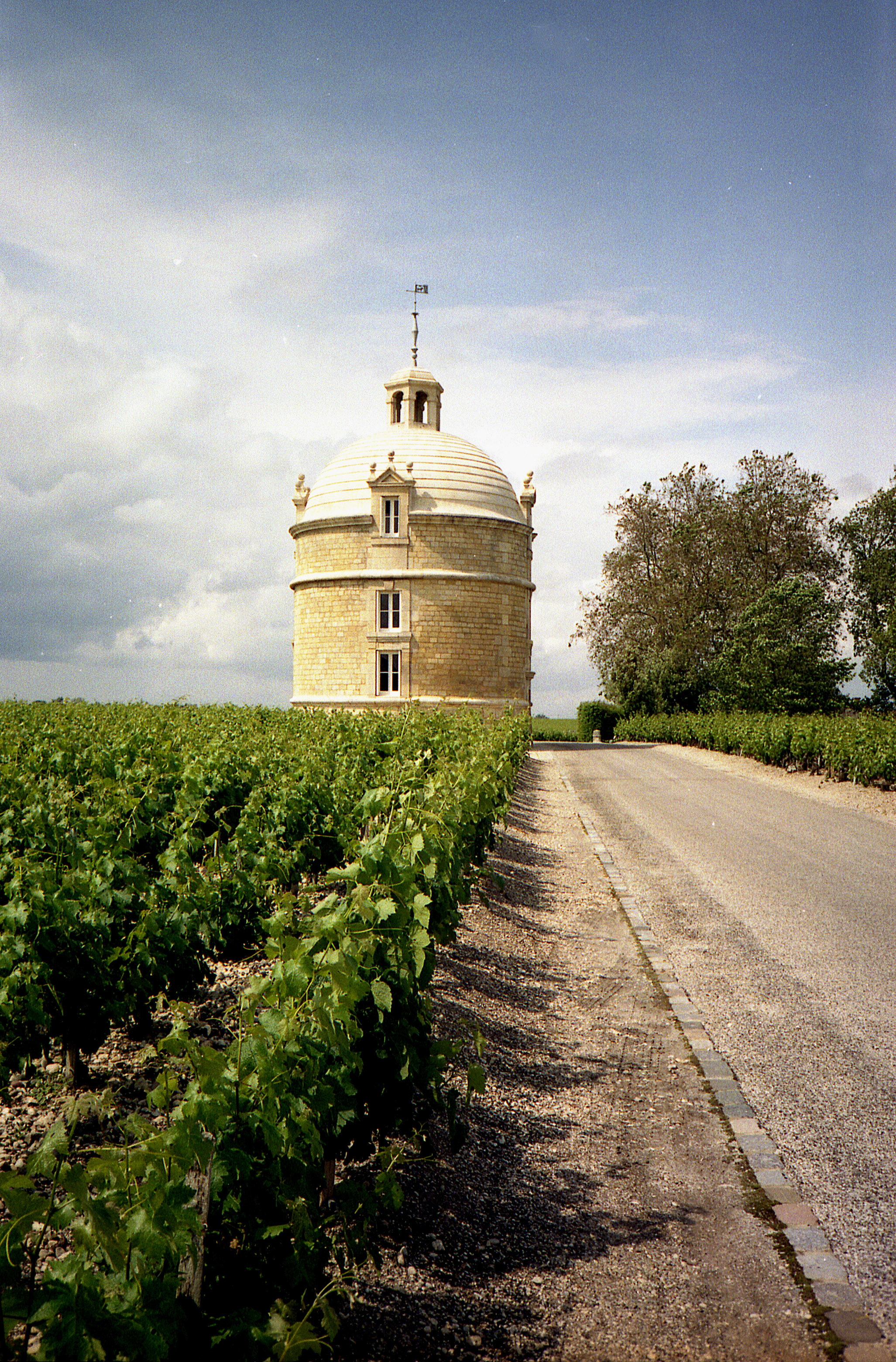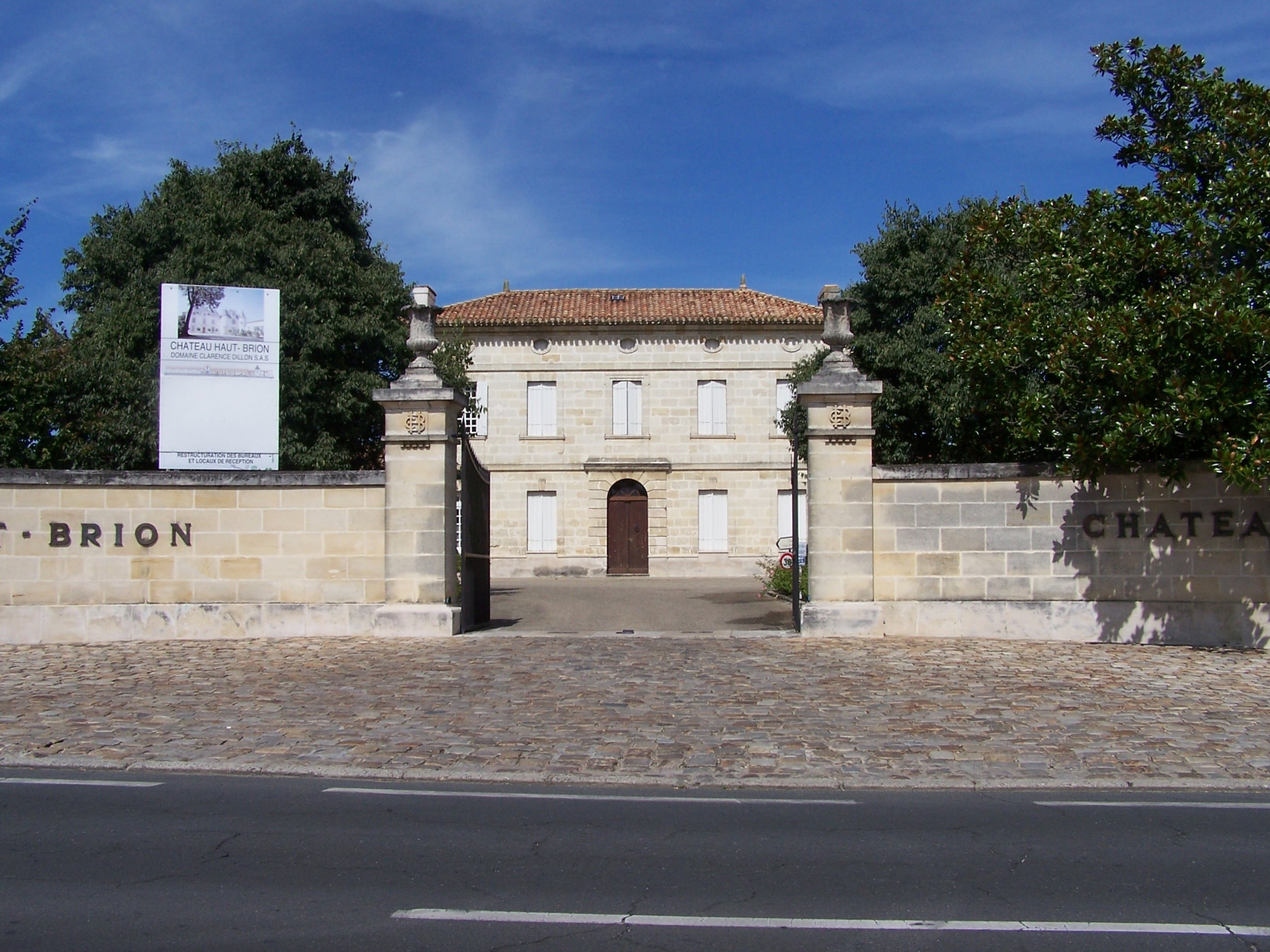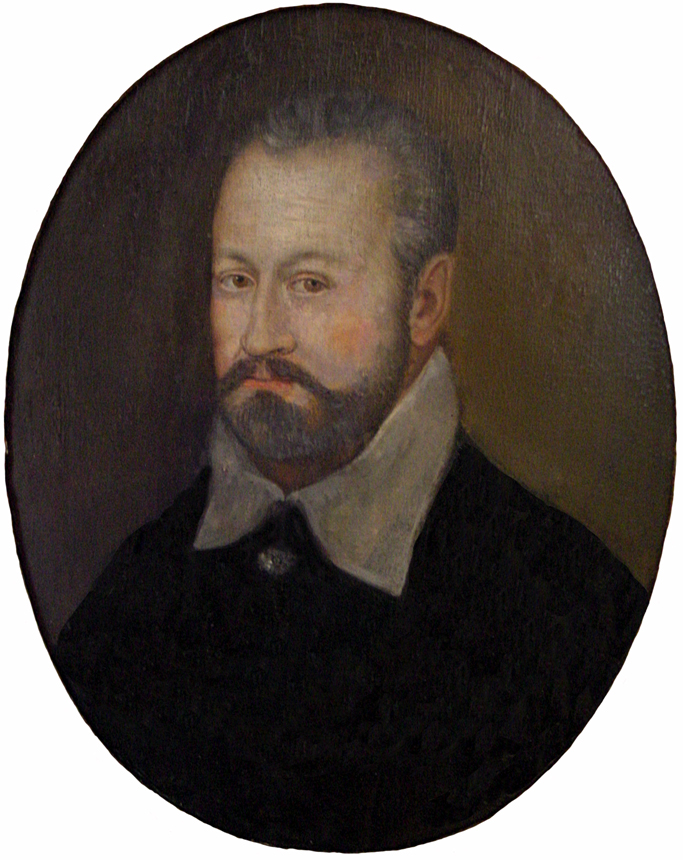|
Château Latour
Château Latour is a French wine estate, rated as a First Growth under the 1855 Bordeaux Classification, owned by Groupe Artemis. Latour lies at the very southeastern tip of the commune of Pauillac in the Médoc region to the north-west of Bordeaux, at its border with Saint-Julien, and only a few hundred metres from the banks of the Gironde estuary. The estate produces three red wines in all. In addition to its ''Grand vin'' ( LWIN 1012316), Latour has also produced the second wine Les Forts de Latour ( LWIN 1010309) since 1966, and a third wine, simply named Pauillac ( LWIN 1013821), has been released every year since 1989. An '' impériale'' (six-litre bottle) of 1961 Château Latour sold for £135,000 in 2011. History The site has been occupied since at least 1331 when Tor à Saint-Lambert was built by Gaucelme de Castillon, and the estate dating to at least 1378. A garrison fort was built 300 metres from the estuary to guard against attack during the Hundred Years' War. ... [...More Info...] [...Related Items...] OR: [Wikipedia] [Google] [Baidu] |
Château La Tour
A château (; plural: châteaux) is a manor house or residence of the lord of the manor, or a fine country house of nobility or gentry, with or without fortifications, originally, and still most frequently, in French-speaking regions. Nowadays a ''château'' may be any stately residence built in a French style; the term is additionally often used for a winegrower's estate, especially in the Bordeaux region of France. Definition The word château is a French word that has entered the English language, where its meaning is more specific than it is in French. The French word ''château'' denotes buildings as diverse as a medieval fortress, a Renaissance palace and a fine 19th-century country house. Care should therefore be taken when translating the French word ''château'' into English, noting the nature of the building in question. Most French châteaux are "palaces" or fine "country houses" rather than "castles", and for these, the word "château" is appropriate in English. ... [...More Info...] [...Related Items...] OR: [Wikipedia] [Google] [Baidu] |
Hundred Years' War
The Hundred Years' War (; 1337–1453) was a series of armed conflicts between the kingdoms of Kingdom of England, England and Kingdom of France, France during the Late Middle Ages. It originated from disputed claims to the French Crown, French throne between the English House of Plantagenet and the French royal House of Valois. Over time, the war grew into a broader power struggle involving factions from across Western Europe, fuelled by emerging nationalism on both sides. The Hundred Years' War was one of the most significant conflicts of the Middle Ages. For 116 years, interrupted by several Ceasefire, truces, five generations of kings from two rival Dynasty, dynasties fought for the throne of the dominant kingdom in Western Europe. The war's effect on European history was lasting. Both sides produced innovations in military technology and tactics, including professional standing armies and artillery, that permanently changed warfare in Europe; chivalry, which had reac ... [...More Info...] [...Related Items...] OR: [Wikipedia] [Google] [Baidu] |
French Revolution
The French Revolution ( ) was a period of radical political and societal change in France that began with the Estates General of 1789 and ended with the formation of the French Consulate in November 1799. Many of its ideas are considered fundamental principles of liberal democracy, while phrases like ''liberté, égalité, fraternité'' reappeared in other revolts, such as the 1917 Russian Revolution, and inspired campaigns for the abolition of slavery and universal suffrage. The values and institutions it created dominate French politics to this day. Its causes are generally agreed to be a combination of social, political and economic factors, which the ''Ancien Régime'' proved unable to manage. In May 1789, widespread social distress led to the convocation of the Estates General, which was converted into a National Assembly in June. Continuing unrest culminated in the Storming of the Bastille on 14 July, which led to a series of radical measures by the Assembly, i ... [...More Info...] [...Related Items...] OR: [Wikipedia] [Google] [Baidu] |
Thomas Jefferson
Thomas Jefferson (April 13, 1743 – July 4, 1826) was an American statesman, diplomat, lawyer, architect, philosopher, and Founding Fathers of the United States, Founding Father who served as the third president of the United States from 1801 to 1809. He was previously the nation's second vice president of the United States, vice president under John Adams and the first United States Secretary of State, United States secretary of state under George Washington. The principal author of the United States Declaration of Independence, Declaration of Independence, Jefferson was a proponent of democracy, republicanism, and individual rights, motivating Thirteen Colonies, American colonists to break from the Kingdom of Great Britain and form a new nation. He produced formative documents and decisions at state, national, and international levels. During the American Revolution, Jefferson represented Virginia in the Continental Congress that adopted the Declaration of Independence. As ... [...More Info...] [...Related Items...] OR: [Wikipedia] [Google] [Baidu] |
Château Haut-Brion
Château Haut-Brion () is a French wine, rated a ''Premier Grand Cru Classé'' ( First Great Growth), produced in Pessac just outside the city of Bordeaux. It differs from the other wines on the list in its geographic location in the north of the wine-growing region of Graves. Of the five first growths, it is the only wine with the Pessac-Léognan appellation and is in some sense the ancestor of a classification that remains the benchmark to this day. In addition to the ''grand vin'' ( LWIN 1011247), Haut-Brion produces a red second wine. Formerly named Château Bahans Haut-Brion, beginning with the 2007 vintage, it was renamed Le Clarence de Haut Brion ( LWIN 1008153). The vineyard also produces a dry white wine named Château Haut-Brion Blanc ( LWIN 1017092), with a limited release of the second dry white wine, Les Plantiers du Haut-Brion, renamed La Clarté de Haut-Brion for the 2008 vintage. History Although grapes are thought to have been grown on the property since Rom ... [...More Info...] [...Related Items...] OR: [Wikipedia] [Google] [Baidu] |
Château Margaux
Château Margaux (), archaically La Mothe de Margaux, is a wine estate of Bordeaux wine, and was one of four wines to achieve ''Premier cru'' (first growth) status in the Bordeaux Classification of 1855. The estate's best wines are very expensive, with a standard-sized bottle of the Château Margaux ''grand vin'' retailing at an average price of $639. The estate is located in the commune of Margaux on the left bank of the Garonne estuary in the Médoc region, in the département of Gironde, and the wine is delimited to the AOC of Margaux. The estate also produces a second wine named Pavillon Rouge du Château Margaux, a third wine named Margaux de Château Margaux, as well as a dry white wine named Pavillon Blanc du Château Margaux which does not conform to the Margaux appellation directives. History The estate has been occupied since at least the 12th century, with the site occupied by a fortified castle known as Lamothe or La Mothe (from ''motte'', a small rise in the ... [...More Info...] [...Related Items...] OR: [Wikipedia] [Google] [Baidu] |
Château Calon-Ségur
Château Calon-Ségur is a winery in the Saint-Estèphe appellation of the Bordeaux wine region of France. The wine produced here was classified as one of fourteen ''Troisièmes Crus Classés'' (Third Growths) in the historic Bordeaux Wine Official Classification of 1855.Karen MacNeil, ''The Wine Bible'', Workman Publishing, 2001, p.885, It is the northernmost classified growth in the Médoc. History "''Calon''", meaning a little river skiff used in the Middle Ages to ferry timber across the Gironde estuary, gave the name to this district which was at one point known as Calones or Saint-Estèphe-de-Calon. In early times, Château Calon-Ségur was one of the original three vineyards in Saint-Estèphe and, in 1825, Château Montrose (in 1855 classified as a Second Growth) was a forest-land parcel belonging to the Calon-Ségur estate. By marriage, the estate came to be owned by Nicolas-Alexandre, marquis de Ségur who also owned Chateau Latour and Chateau Lafite. Despite his o ... [...More Info...] [...Related Items...] OR: [Wikipedia] [Google] [Baidu] |
Château Mouton Rothschild
Château Mouton Rothschild is a wine estate located in the village of Pauillac in the Médoc region, 50 km (30 mi) north-west of the city of Bordeaux, France. Originally known as ''Château Brane-Mouton'', its red wine was renamed by Nathaniel de Rothschild in 1853 to ''Château Mouton Rothschild''. In the 1920s it began the practice of bottling the harvest at the estate itself, rather than shipping the wine to merchants for bottling elsewhere. The branch of the Rothschild family owning Mouton Rothschild are members of the Primum Familiae Vini. History In 1718, Château Mouton and Château Calon-Ségur were acquired by Nicolas-Alexandre de Ségur, who already owned Château Lafite and Château Latour. With the death of Nicolas-Alexandre Ségur in 1755, his estate was divided among four daughters. The Bordeaux Wine Official Classification of 1855 was based entirely on recent market prices for a vineyard's wines, with one exception: Château Mouton Rothschild. Despit ... [...More Info...] [...Related Items...] OR: [Wikipedia] [Google] [Baidu] |
Nicolas-Alexandre, Marquis De Ségur
Nicolas-Alexandre, marquis de Ségur (1695–1755) was a Bordeaux wine maker who during his lifetime was known as the "Prince of Vines" due to his ownership of some of the most famous Bordeaux chateaus-including Château Lafite, Château Latour, Château Mouton and Château Calon-Ségur. A hundred years after his death, the Bordeaux Wine Official Classification of 1855 would designate Lafite and Latour as First Growths, Mouton as a second growth and Calon-Ségur as a third growth. Biography Family background Nicolas-Alexandre Ségur was the son of Alexandre de le Meon de Ségur de Francs et Portugaises and Marie-Thérèse de Clausel and paternal grandson of Jean-Isaac, marquis de Ségur (d. 1707), military commander and a descendant of François de Ségur, seigneur de Sainte-Aulaye (d. 1605).The Marquis de Ségur Chateau Latour hi ... [...More Info...] [...Related Items...] OR: [Wikipedia] [Google] [Baidu] |
Château Lafite
A château (; plural: châteaux) is a manor house or residence of the lord of the manor, or a fine country house of nobility or gentry, with or without fortifications, originally, and still most frequently, in French-speaking regions. Nowadays a ''château'' may be any stately residence built in a French style; the term is additionally often used for a winegrower's estate, especially in the Bordeaux region of France. Definition The word château is a French word that has entered the English language, where its meaning is more specific than it is in French. The French word ''château'' denotes buildings as diverse as a medieval fortress, a Renaissance palace and a fine 19th-century country house. Care should therefore be taken when translating the French word ''château'' into English, noting the nature of the building in question. Most French châteaux are " palaces" or fine "country houses" rather than "castles", and for these, the word "château" is appropriate in English ... [...More Info...] [...Related Items...] OR: [Wikipedia] [Google] [Baidu] |
Smallholding
A smallholding or smallholder is a small farm operating under a small-scale agriculture model. Definitions vary widely for what constitutes a smallholder or small-scale farm, including factors such as size, food production technique or technology, involvement of family in labor and economic impact. Smallholdings are usually farms supporting a single family with a mixture of cash crops and subsistence farming. As a country becomes more affluent, smallholdings may not be self-sufficient, but may be valued for the rural lifestyle. As the sustainable food and local food movements grow in affluent countries, some of these smallholdings are gaining increased economic viability. There are an estimated 500 million smallholder farms in developing countries of the world alone, supporting almost two billion people. Small-scale agriculture is often in tension with industrial agriculture, which finds efficiencies by increasing outputs, monoculture, consolidating land under big agricu ... [...More Info...] [...Related Items...] OR: [Wikipedia] [Google] [Baidu] |
Michel De Montaigne
Michel Eyquem, Sieur de Montaigne ( ; ; 28 February 1533 – 13 September 1592), also known as the Lord of Montaigne, was one of the most significant philosophers of the French Renaissance. He is known for popularizing the essay as a literary genre. His work is noted for its merging of casual anecdotes and autobiography with intellectual insight. Montaigne had a direct influence on numerous Western writers; his massive volume ''Essais'' contains some of the most influential essays ever written. During his lifetime, Montaigne was admired more as a statesman than as an author. The tendency in his essays to digress into anecdotes and personal ruminations was seen as detrimental to proper style rather than as an innovation, and his declaration that "I am myself the matter of my book" was viewed by his contemporaries as self-indulgent. In time, however, Montaigne came to be recognized as embodying, perhaps better than any other author of his time, the spirit of freely entertain ... [...More Info...] [...Related Items...] OR: [Wikipedia] [Google] [Baidu] |







.jpg)

